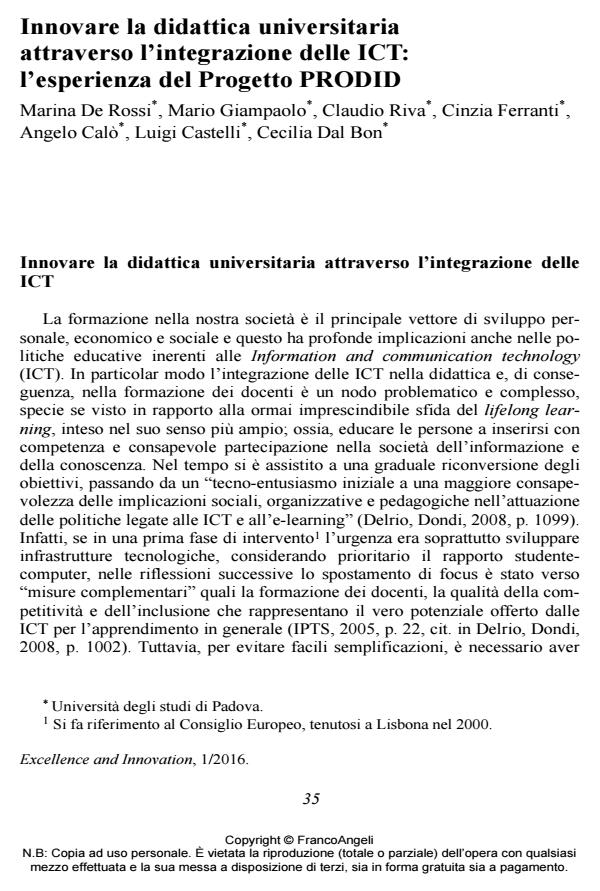Innovating Accademic Didactic Through ICT: the Experience of the PRODID Project
Journal title EXCELLENCE AND INNOVATION IN LEARNING AND TEACHING
Author/s Marina De Rossi, Mario Giampaolo, Claudio Riva, Cinzia Ferranti, Angelo Calò, Luigi Castelli, Cecilia Dal Bon
Publishing Year 2016 Issue 2016/1
Language Italian Pages 18 P. 35-52 File size 73 KB
DOI 10.3280/EXI2016-001003
DOI is like a bar code for intellectual property: to have more infomation
click here
Below, you can see the article first page
If you want to buy this article in PDF format, you can do it, following the instructions to buy download credits

FrancoAngeli is member of Publishers International Linking Association, Inc (PILA), a not-for-profit association which run the CrossRef service enabling links to and from online scholarly content.
This article deals with the theme of innovation in academic didactic through the use of technologies and is one of the outputs of a larger project, "Preparazione alla professionalità docente e innovazione didattica" (PRODID), which aims to establish and develop strategies to support teaching profession at the University of Padua. The authors introduce the theoretical framework and the projects carried out in the University of Padua to take advantage of the potential of technology, then present the results obteined during the first year of the project. Data were collected using a structured questionnaire which involved professors of the University and semi-structured interviews conducted with 16 privileged witnesses forming part of the teaching staff. The questionnaire collects the level of diffusion of didactic solutions that rely on online resources and the quality of teaching experiences conducted by the teachers. The interviews relate to multiple aspects of teaching by highlighting best and innovative practices, resistances due to established practices, and teaching models adopted.
Keywords: Teachers’ professional development; didactic technologies; blen¬ded learning; university; equal opportunity; innovation.
Marina De Rossi, Mario Giampaolo, Claudio Riva, Cinzia Ferranti, Angelo Calò, Luigi Castelli, Cecilia Dal Bon, Innovare la didattica universitaria attraverso l’integrazione delle ICT: l’esperienza del Progetto PRODID in "EXCELLENCE AND INNOVATION IN LEARNING AND TEACHING" 1/2016, pp 35-52, DOI: 10.3280/EXI2016-001003